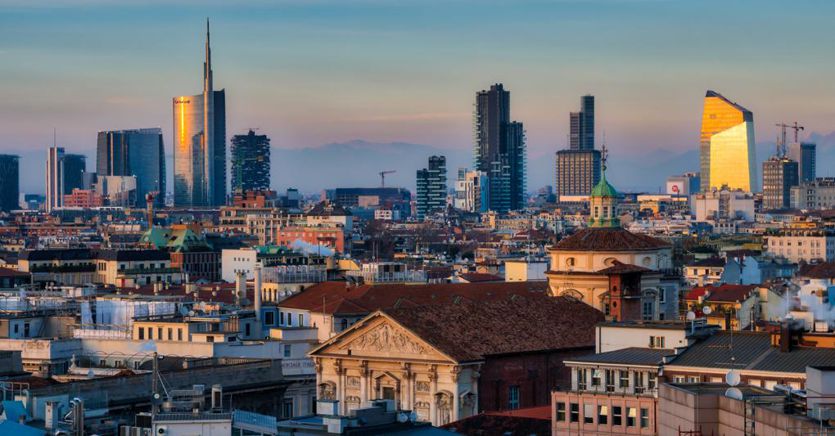The key points
- The scenery
- The South
- The Pnrr
All the Italian provinces lost added value in 2020 with the pandemic compared to 2019 but if the average decline was 7.1%, there were reductions of 13.1% in Brindisi and 1.7% in Enna. Milan loses 5.6% and remains at the top for per capita added value with 47,495 euros and an average of 189.5 made 100 the national average, as stated in a study carried out by the Tagliacarne Institute of Unioncamere which highlights how the pandemic especially slowed down the provinces of the North (-7.4% on average) compared to the South (-6.4%). The Center is behind by 7.3%.
In Rome and Milan 19.7% of the entire wealth of the country is produced (+2 percentage points compared to 2000) while the first 20 provinces concentrate 55.4% of all the wealth produced. The territorial economies with the highest presence of companies with less than 50 employees, which are the backbone of our country system, recorded the most consistent losses of income produced, -7.5% between 2019 and 2020. In particular in this ‘area recorded more significant losses in added value: Pistoia (-9.0%), Prato (-9.5%), Fermo (-7.3%), Barletta-Andria-Trani (-10.6%) and South Sardinia (-9.5%).
«The Covid effect has not spared any Italian province, – explains the president of Unioncamere, Andrea Prete – but without the tenacity of our companies combined with the government’s measures, the losses of the added value we have recorded would have been much more important. In particular, he adds, the South is worrying where the pandemic crisis, although it has reported less significant losses, has settled in an area already strongly tested socially and economically both in terms of per capita income and the spread of situations of poverty. This is why it is important to ground the initiatives envisaged by the PNRR and in this the Chambers of Commerce with their network rooted in the territories can be an exceptional instrument ».
From a sectoral point of view, on the other hand, the manufacturing areas were penalized the most (-7.9%). It is above all those with the most intense vocation in textiles and clothing (-8.1%) and in culture (-7.9% net of Rome and Milan) that have been affected.
The 16 provinces in which the incidence of textiles and clothing is above the national average all closed with a worse balance than the national average (-9.4% against the national average -7.1%) with four of these having registered double-digit losses: Rovigo (-11.7%), Macerata (-12.5%), Ascoli Piceno (-11.9%) and Barletta-Andria-Trani (-10.6%).
On the cultural front, net of Rome and Milan, which constitute the two main poles of Italian culture, the other 9 provinces / metropolitan cities that have an incidence of the cultural and creative system above the national average lost -7.9% ( against a drop of -6.1% in the two main metropolitan cities). These are Turin (-7.4%), Padua (-8.1%), Trieste (-8.3%), Bologna (-6.5%), Ancona (-6.6%), Florence ( -9.8%), Pisa (-9.0%), Arezzo (-8.9%), Siena (-9.3%).
The blue and green economy have proved to be important weapons in various territories to limit the damage of the pandemic on the wealth produced. Six out of ten provinces with the largest share of companies that made green investments in the 2016-2020 period held up better than the national average: Novara (-7.1%), Imperia (-6.9%), Varese (-6, 0%), Ravenna (-7.0%), Salerno (-3.5%), Campobasso (-7.2%), Isernia (-3.3%) against -7.1% of the national added value . While the 48 provinces in which the weight of the sea economy is highest recorded declines of -6.6% against the national average of 7.1% with Livorno (-4.1%), Savona (-5.7 %) and Imperia (-6.9%) which are the provinces that have been able to capitalize most of the high weight that the sea has in characterizing their economies.
